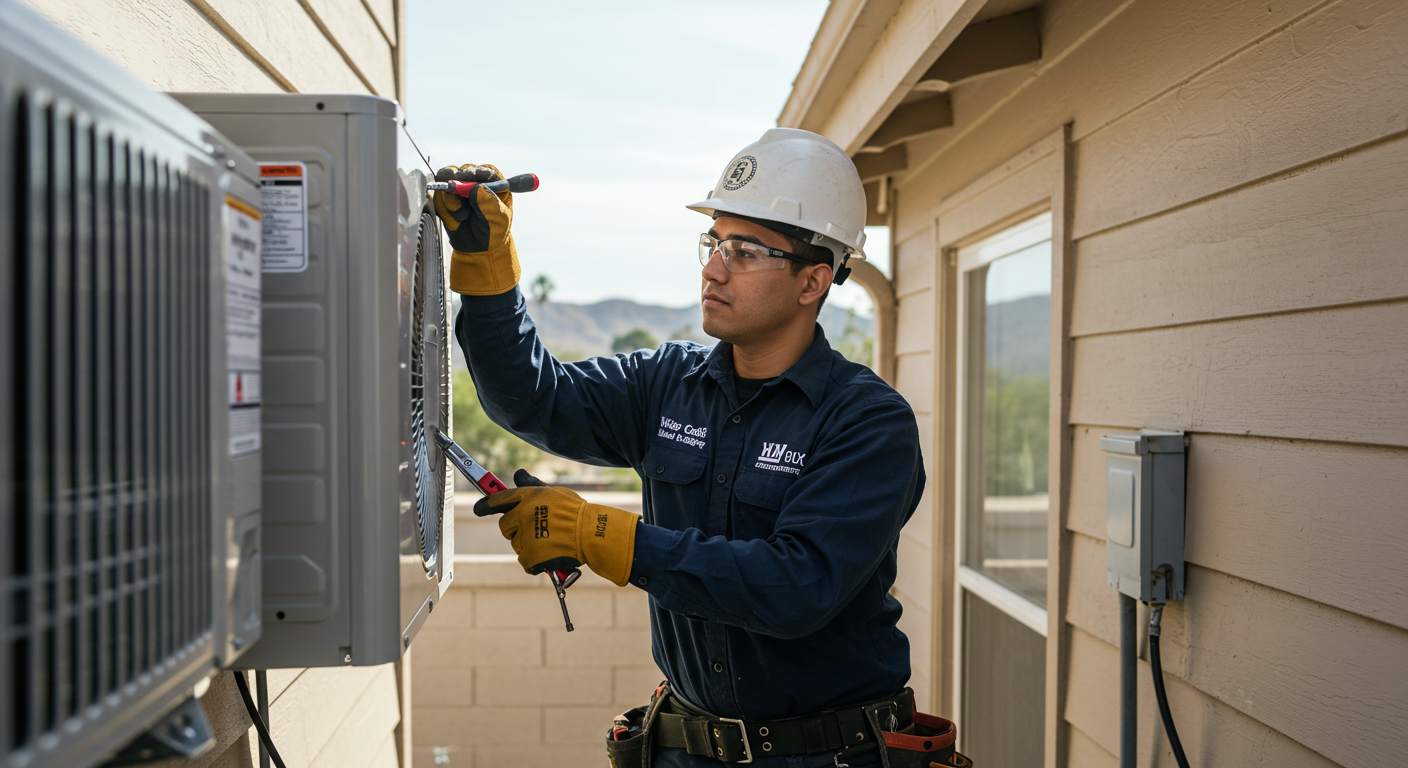When it comes to comfort in California’s unpredictable climate, your HVAC system is the backbone of a healthy indoor environment. However, improper installation is one of the most common—and most expensive—mistakes homeowners face. Many Californians invest in new systems only to discover high energy bills, uneven cooling, or frequent breakdowns within the first year. That’s why selecting the right HVAC unit, working with certified professionals, and avoiding rushed decisions are essential.
At US Air Conditioning & Heating, we’ve helped thousands of homeowners and businesses across California avoid these costly errors. From oversized systems to poorly sealed ductwork, installation mistakes can reduce your HVAC’s lifespan by nearly 30%. This blog will walk you through seven practical tips to ensure your system is installed correctly the first time. Whether you’re considering residential or commercial HVAC replacement, or simply researching the cost of an AC unit installed, these insights can protect your comfort and your wallet.
Tip 1: Choose the Right HVAC Size
The first mistake homeowners make is assuming “bigger is better.” An oversized HVAC unit cycles on and off too often, leading to uneven temperatures and premature wear. On the other hand, an undersized system struggles to keep up, running nonstop and inflating your energy bill.
Before installation, your contractor should perform a Manual J load calculation. This analysis considers square footage, insulation quality, window placement, and even local weather patterns. Skipping this step is a red flag. In California, where coastal climates differ drastically from inland heat, correct sizing is non-negotiable.
For example, commercial AC unit installation often requires multiple zoning options, while residential systems may need duct modifications to achieve consistent airflow. Working with a certified HVAC unit installation company like US Air Conditioning & Heating ensures your investment is tailored to your space—not just an estimate.
Tip 2: Verify Proper Ductwork Design
Even the best HVAC equipment fails without efficient ductwork. Leaky or poorly designed ducts waste up to 30% of cooled air before it even reaches your living space. That translates into higher monthly bills and overworked systems.
Signs of duct issues include hot and cold spots, noisy airflow, or excessive dust in your home. When planning your HVAC service & installation, insist on a duct inspection. Technicians should measure airflow, check for leaks, and confirm that ducts are sized for your new system.
California homes built before 2000 often have duct systems designed for outdated equipment. Replacing HVAC ductwork or upgrading insulation may be necessary to maximize performance. Many homeowners hesitate due to cost, but the long-term savings on energy bills and reduced HVAC repair services make it worthwhile.
Tip 3: Work with Licensed Professionals
Improper installation is often the result of hiring unlicensed or inexperienced installers. While lower labor costs to install AC units may seem attractive, the long-term risk outweighs short-term savings.
Licensed contractors follow state regulations, carry insurance, and are trained to handle complex electrical, gas, and refrigerant connections. California requires technicians to hold C-20 licenses for HVAC installation, protecting consumers from unsafe practices.
When searching for HVAC repair near me or AC repair and service companies, check credentials and reviews. Trusted providers like US Air Conditioning & Heating have a track record of safe, efficient installations across residential and commercial properties. Partnering with certified professionals reduces the chances of needing emergency HVAC repair just months later.
Tip 4: Don’t Overlook Ventilation Needs
Many homeowners assume HVAC installation is only about heating and cooling. Ventilation, however, is equally critical. Without proper airflow, moisture builds up, leading to mold, allergies, and poor indoor air quality.
In California, where wildfire smoke and smog are frequent concerns, clean ventilation is vital. During installation AC service, your technician should test air exchange rates and recommend filters designed for local air conditions. Consider asking about advanced filtration systems, energy recovery ventilators, or smart thermostats that track air quality.
Ignoring ventilation needs not only harms your health but also shortens your system’s lifespan. Investing in the right ventilation setup today saves you from emergency AC repair or costly replacements later.
Tip 5: Schedule Regular Maintenance After Installation
Even the best installation won’t prevent issues if you neglect maintenance. Many homeowners install a new system and forget about it until something breaks. Regular tune-ups ensure optimal performance and prevent small issues from escalating.
A reliable provider of HVAC repair 24/7 services will offer maintenance packages, including filter replacement, refrigerant checks, and system cleaning. For businesses, commercial HVAC replacement contracts often include seasonal inspections to keep large units running efficiently.
Homeowners often ask how often to replace HVAC filters. The answer depends on usage, but most need changing every 30 to 90 days. Skipping this step leads to clogged airflow and higher AC unit repair costs. Choosing an ongoing service plan with a company like US Air Conditioning & Heating ensures peace of mind year-round.
Tip 6: Understand the True Costs
Hidden costs catch many Californians off guard. The average price for HVAC replacement includes more than just the equipment—it covers ductwork, labor, permits, and sometimes electrical upgrades.
For example:
- AC unit installers may charge extra for hard-to-reach attics or basements.
- Window AC installation costs differ from full HVAC replacement.
- Commercial AC installation often requires zoning permits and higher-grade equipment.
Ask for a written estimate that breaks down the cost of an AC unit installed, including labor cost to install AC unit and potential upgrades. Transparent pricing helps you compare offers fairly without falling for low bids that cut corners.
Tip 7: Plan for Emergency Situations
No system is immune to breakdowns. Having a trusted partner for emergency HVAC repair can save you from unbearable summer heat or freezing winter nights.
California’s hot summers often push units to their limit, making services like AC emergency repair or 24-hour HVAC repair critical. A reliable company offers rapid response, skilled technicians, and genuine parts to restore comfort quickly.
Whether it’s a simple thermostat replacement, an HVAC ductwork repair, or a full commercial HVAC replacement, planning ahead avoids panic when systems fail. Building a relationship with a local provider such as US Air Conditioning & Heating ensures help is just a call away when you need it most.
Conclusion
Improper HVAC installation can cost California homeowners and businesses thousands of dollars in wasted energy, frequent repairs, and premature replacements. By choosing the right system size, verifying ductwork, hiring licensed professionals, and planning for maintenance, you can avoid the most common pitfalls.
For trusted HVAC repair services in California, US Air Conditioning & Heating is here to guide you every step of the way—from installation to emergency support. Protect your comfort, save money, and ensure your system lasts for years to come. Call us today at (877) 872-4777 for expert advice and reliable service.





